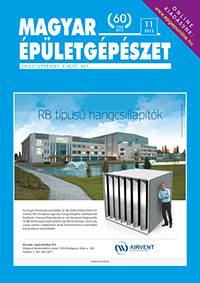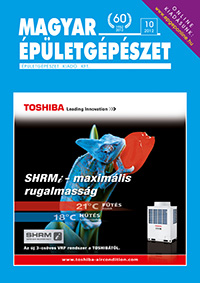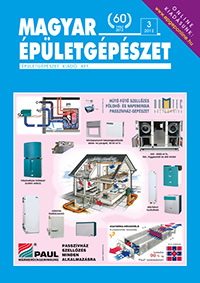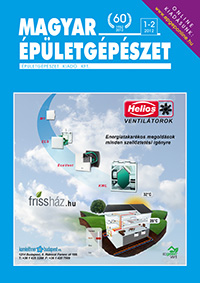Lapszámok

2012 12. szám
- Dr. Barna Lajos PhD:
Magyar Épületgépészek Napja 2012 - Mangel Zoárd:
Az Agóra Szeged Pólus intézmény gépészeti tervezése - Parsch Ádám:
Passzívház jellegű lakóépület energetikai vizsgálata - Bodó Béla - Tóth György:
Pneumatikus csőpostahálózat a Debreceni Egyetem Orvos- és Egészségtudományi Centrum területén - Dr. Horváth Miklós PhD:
Az építészeti paraméterek hatása a gépészeti rendszerek méretezésére - Rébay Lajos - Dr. Barna Lajos PhD:
Tanulságos életpályák – Mészáros Ferenc - Grundfos South East Europe Kft.:
Bemutatkozik a Grundfos GO - Johnson Controls International Kft.:
Takarítson meg több energiát ott, ahol a legtöbbet fogyasztja! - Budatech Kft.:
Amikor a kevesebb több: egyedülálló levegő-víz hőszivattyú - Szilvágyi Zsombor:
Két hasznos újdonság a térfogatáram-szabályozásban - Fahlén, Per:
Capacity control of heat pumps
Hozzászólások
Capacity control of heat pumps
Még nem érkezett hozzászólás!
Fahlén, Per
Capacity control of heat pumps
Svédországban a hőszivattyús rendszerek méretezésének tekintetében az a trend, hogy sokkal inkább a fűtési hőigények teljes lefedettsége kerül előtérbe, mint az korábban jellemző volt. Ennek a fejlesztésnek gazdasági és jogi jelentősége egyaránt van (például a növekvő villamosenergia-árak, vagy a helyi építési szabályzat alapján fűtési célra leköthető villamos teljesítmény). Ez azt jelenti, hogy a berendezések üzemidejük szinte teljes egészében részterhelésen működnek, azaz a hatékonyságuk rendkívül alacsony. Ez különösen igaz az új, alacsony energiaigényű épületek esetében, ami előtérbe helyezi a változtatható teljesítményű hőszivattyúk alkalmazását. A cikk bemutatja az alkalmazkodó villamos motorok, hajtások és vezérlés jelentőségét, amelyek alkalmazásával részterhelés esetén is magas COP érhető el.
General aspects of capacity control
Capacity control, primarily by means of Variable-Speed Drive (VSD) motors, is commonly used to improve the efficiency of operation of systems for heating, cooling and ventilation. However, before going into the specific application of heat pumps it may be pertinent to look at some of the generic aspects.
Matching of supply and demand
HVAC systems are sized to cover a planned maximum design load, e.g. at the design outdoor temperature for heating or cooling or at the design polluting load for hygienic ventilation.
Normal operation is at substantially lower levels, e.g. the ventilation rate in VAV systems rarely exceeds 30% of the design flow. This means that large energy savings are possible for heating, cooling and fan energy by capacity control of the fan motor. Theoretically this means that the fan motor should be optimized for a drive power that is around 30% of the design power in pressure-controlled systems and for only 5% of the design power in future, decentralized systems [1]. Similarly, a heat pump sized for full coverage has 80–90% of the operating hours at a capacity which is less than half the design power.
Demand starts at room level and a common experience is that use is larger than actual demand. This difference tends to increase when the load factor (i.e. power utilization) goes down. It is more difficult to control a small energy supply with a large power than with a small power. One way [1], [2] to accomplish the required load matching is by variable-speed drive (VSD) of compressors, pumps and fans.









